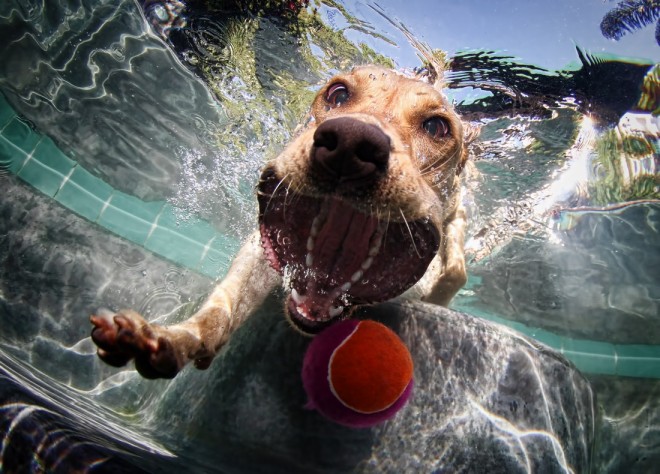
Photograph by SETH CASTEEL @ LittleFriendsPhoto.com
Hi Dr. Janeway,
We take our Jack Russel Terrier June Bug swimming at the higher elevation lakes during the summer, is it ok for her to swim in the lakes, or is there anything that we need to be worried about? She loves to play in the water!
Thank you,
Sam in Nevada City
Thanks Sam, great question! There is not any particular health concern with swimming in the local lakes, we are fortunate to live in a beautiful area with fresh clean lakes to enjoy. I do recommend that you be sure to bring June Bug in for her annual leptospirosis vaccine- lepto is a life-threatening disease causing bacteria that persists in moist soil or waters. You should also be sure to pay close attention to local signage, if there is any indication of a very rare blue-green algae bloom do not allow your dog to swim there. Other than those rare situations, there are currently no specific health concerns regarding infectious or toxic agents at our local lakes. Since June Bug is a dog that loves to play in the water you may want to look out for symptoms of water intoxication or swimmer’s tail (technically called acute caudal myopathy. Other fun slang terms include: rudder tail, limber tail or happy tail).
When a dog is playing in the water for hours, especially if biting toys/sticks or diving under the water they can swallow excessive amounts of water. When excessive amounts of water are ingested, it is easily absorbed through the gi tract into the body cells and blood stream. This influx of water causes an electrolyte imbalance where sodium can drop to dangerous levels. Low sodium levels can result in cerebral edema or brain swelling that could lead to coma and even death if not treated promptly and aggressively. You should always be sure to enforce occasional rests from water play so that your dog does not consume too much water and will take the time to urinate as needed. If you are concerned about your dog’s behavior after a day of swimming please take her to the vet right away.
Swimmer’s tail is a much less serious, but painful problem that some dogs experience after prolonged periods of swimming. It can also occur (sadly) if a dog has been playing vigorously and wagging his or her tail excessively for long periods of time. Clinical signs of swimmer’s tail include a painful base of the tail, tail hanging limply, not wagging the tail, difficulty standing or restlessness. Treatment of swimmer’s tail is primarily pain and anti-inflammatory medication prescribed by a veterinarian as well as enforced rest.
As long as you enforce occasional rest from water play, there are no reasons not to allow June Bug to have fun in the water. I hope that I have answered your questions and that you and June Bug have a safe and accident free summer exploring our beautiful area!
Dr. Robin Janeway is a veterinarian at Brighton Greens Veterinary Hospital in Grass Valley by the fairgrounds. Your question could be the topic for next month’s article! Just submit your questions at www.facebook.com/brightongreensvet.com
